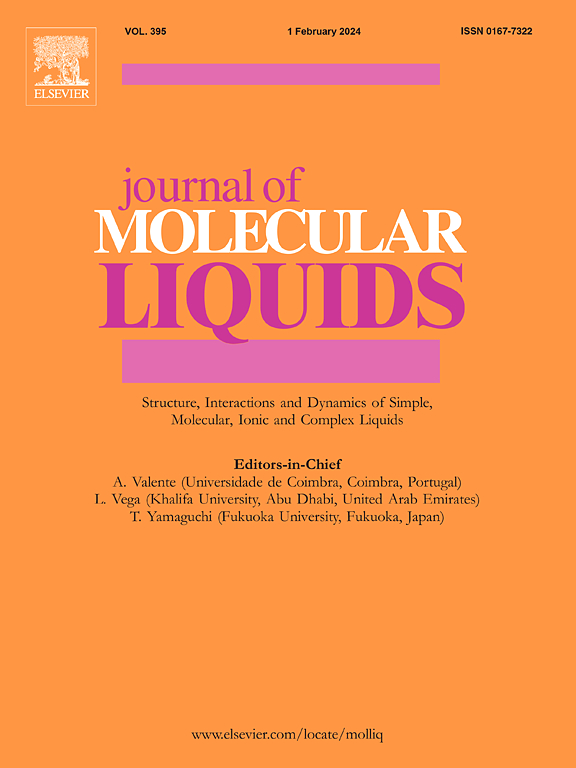Molecular dynamic simulations on wetting transition of nanofluid on a single grooved structure
IF 5.3
2区 化学
Q2 CHEMISTRY, PHYSICAL
引用次数: 0
Abstract
Wettability played a crucial role in surface science, and one of the most widely used methods for adjusting wettability was constructing surface structures. The fifty percent mole fraction ethanol solution wetting on a single grooved structure was studied with molecular dynamic simulation. Three types of intrinsic wettability for smooth surfaces (hydrophilic, moderate, and hydrophobic) and various groove sizes of structures were simulated. A revised formula was presented to calculate the wetting state on the nanoscale, and the density distribution of ethanol solution in nano-grooves was explored. The influence of intrinsic wettability and the size of nano-structure on wetting states was investigated, and molecular concentration distribution and the free energy in wetting transition was analyzed quantitatively. Results showed the revised formula demonstrated the accuracy in differentiating the wetting state at the nanoscale. The density of ethanol solution in the nano-groove was proportional to the spacing (from 0.5 g/cm3 to 0.627 g/cm3) and inversely proportional to the height (from 0.645 g/cm3 to 0.56 g/cm3). It was related not only to the potential field of the nano-groove, but also to the mole fraction of ethanol molecules in the groove. The wetting transition from Cassie state to Wenzel state was triggered with the increase of the groove’s spacing and the decrease of the height. The corresponding free energy was changed from high level dropping to lower. This article was helpful to the standardization and normalization of wetting state at the nanoscale.
求助全文
约1分钟内获得全文
求助全文
来源期刊

Journal of Molecular Liquids
化学-物理:原子、分子和化学物理
CiteScore
10.30
自引率
16.70%
发文量
2597
审稿时长
78 days
期刊介绍:
The journal includes papers in the following areas:
– Simple organic liquids and mixtures
– Ionic liquids
– Surfactant solutions (including micelles and vesicles) and liquid interfaces
– Colloidal solutions and nanoparticles
– Thermotropic and lyotropic liquid crystals
– Ferrofluids
– Water, aqueous solutions and other hydrogen-bonded liquids
– Lubricants, polymer solutions and melts
– Molten metals and salts
– Phase transitions and critical phenomena in liquids and confined fluids
– Self assembly in complex liquids.– Biomolecules in solution
The emphasis is on the molecular (or microscopic) understanding of particular liquids or liquid systems, especially concerning structure, dynamics and intermolecular forces. The experimental techniques used may include:
– Conventional spectroscopy (mid-IR and far-IR, Raman, NMR, etc.)
– Non-linear optics and time resolved spectroscopy (psec, fsec, asec, ISRS, etc.)
– Light scattering (Rayleigh, Brillouin, PCS, etc.)
– Dielectric relaxation
– X-ray and neutron scattering and diffraction.
Experimental studies, computer simulations (MD or MC) and analytical theory will be considered for publication; papers just reporting experimental results that do not contribute to the understanding of the fundamentals of molecular and ionic liquids will not be accepted. Only papers of a non-routine nature and advancing the field will be considered for publication.
 求助内容:
求助内容: 应助结果提醒方式:
应助结果提醒方式:


